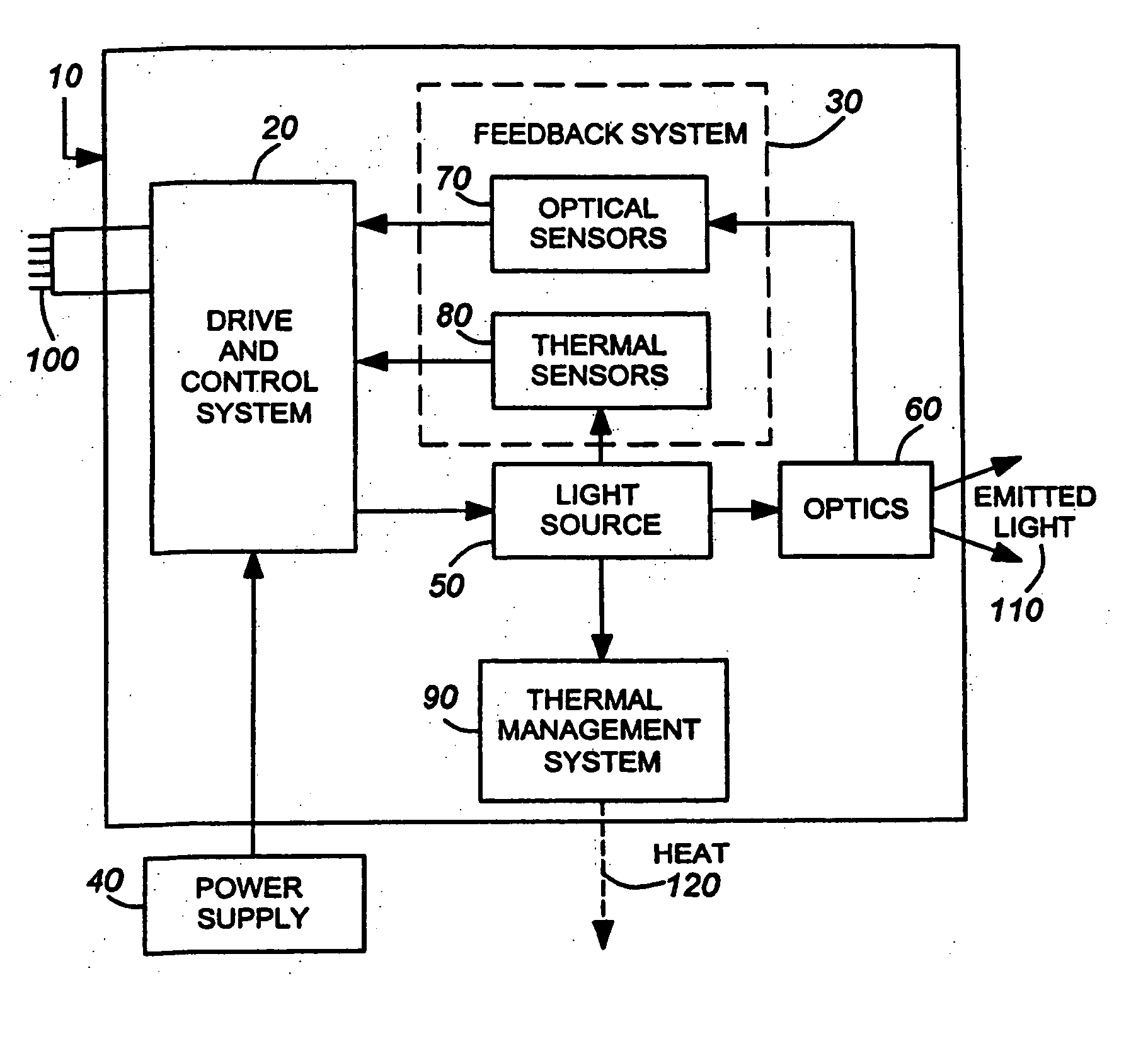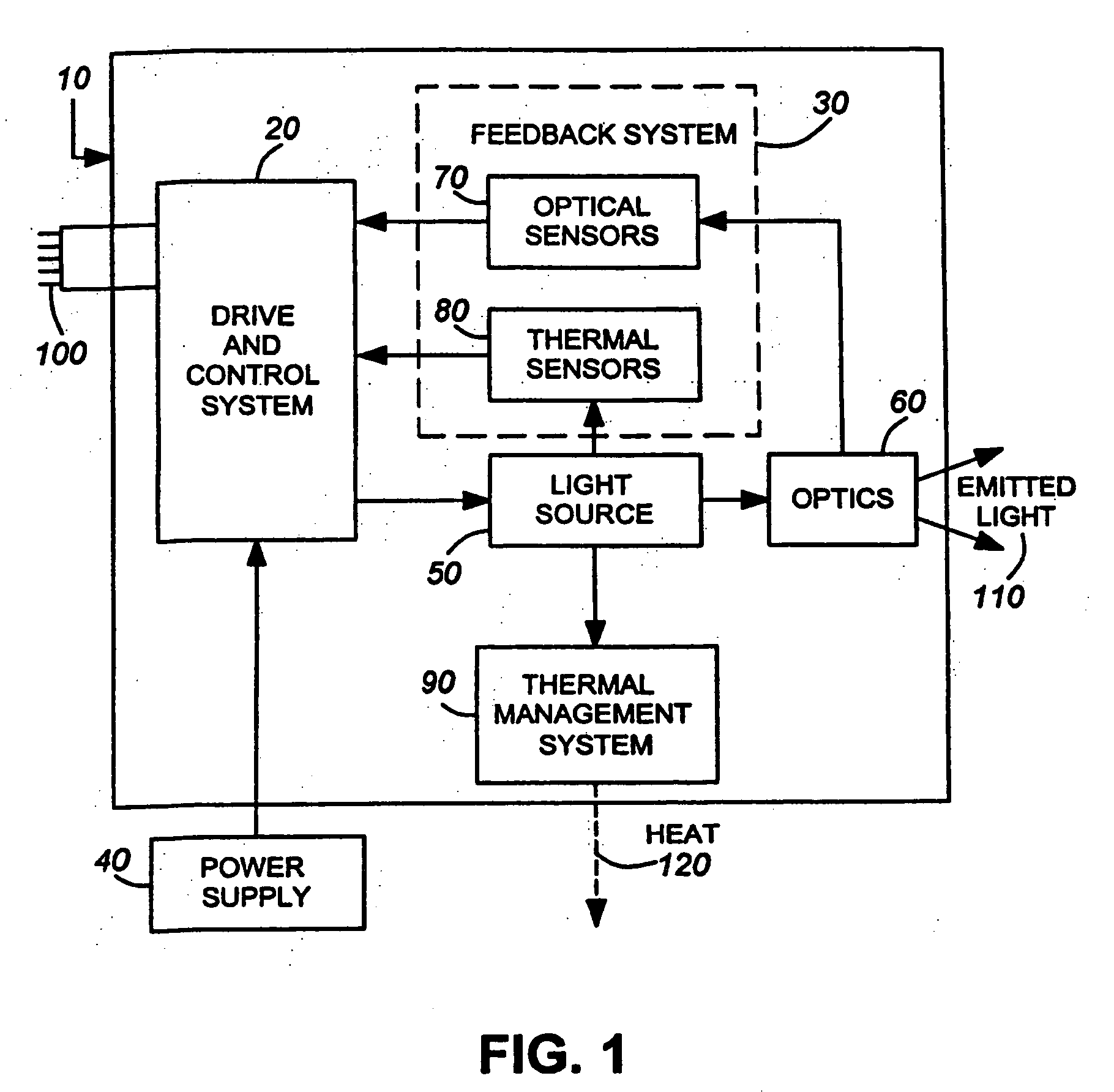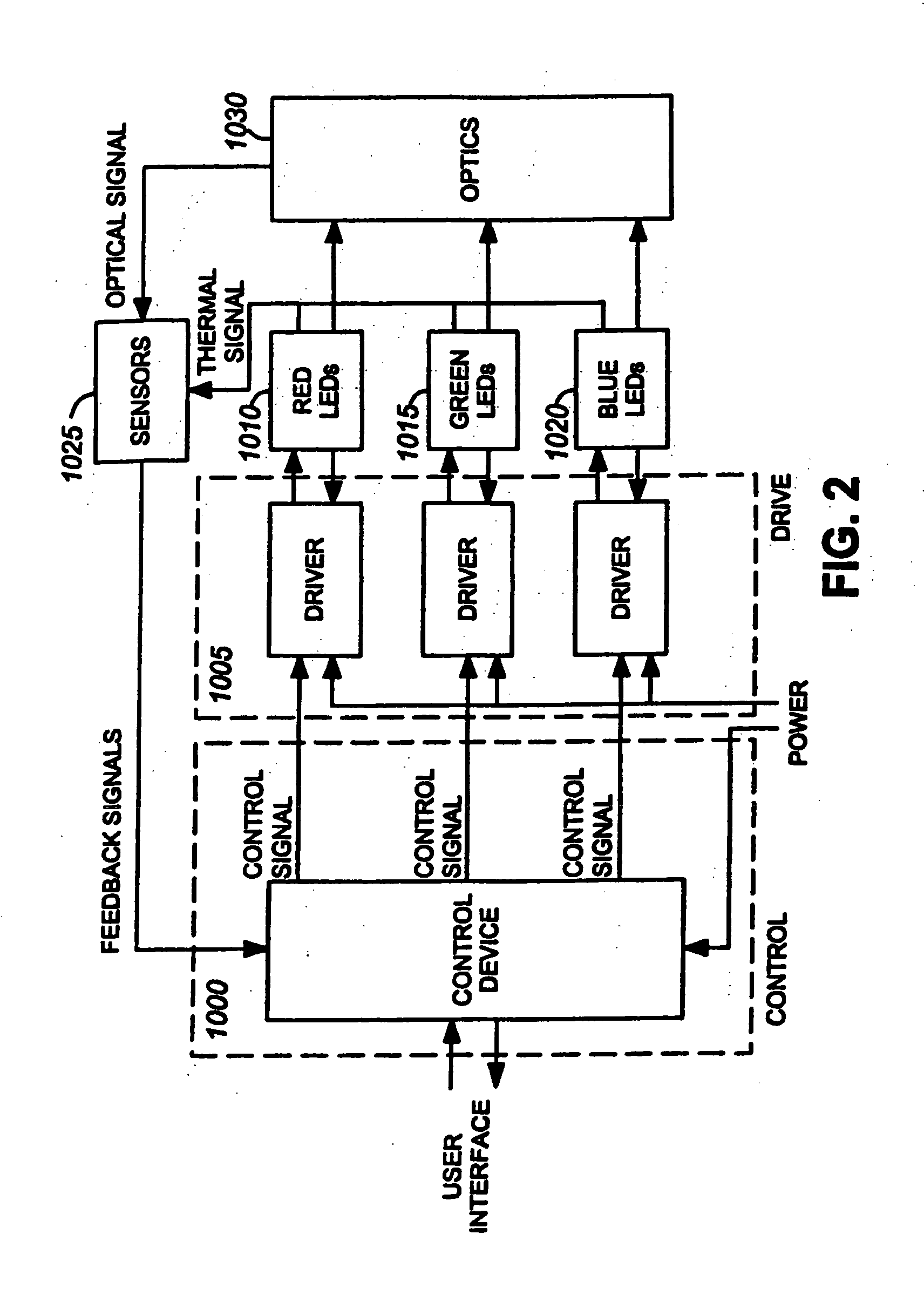Integrated Modular Light Unit
a modular light unit and integrated technology, applied in the field of light systems, can solve the problems of affecting the functionality affecting the operation of the lighting apparatus, etc., and unable to provide a means for enabling colour control, intensity control, thermal control or any other control
- Summary
- Abstract
- Description
- Claims
- Application Information
AI Technical Summary
Benefits of technology
Problems solved by technology
Method used
Image
Examples
example 1
[0127]FIG. 8 illustrates a first example of the present invention integrated into a multi-lighting module quad flat pack (QFP) package. The lighting unit comprises a plurality of light-emitting elements 300 which also includes proximate optical elements. The reflector optic 310 manipulates the emissions from the light-emitting elements in a desired direction that may subsequently interact with a secondary optic 320, if this secondary optical is provided. In one embodiment this secondary optic can be a snap-on type optic thereby enabling ease of removal and inclusion of this optic. The light-emitting elements can be mounted on a CVD diamond substrate 370 through the use of a thermally conductive adhesive thereby enabling thermal conductivity there through. In direct thermal contact to the CVD diamond substrate is a heat pipe 360 which can be held in a desired position by a housing 350. The heat pipe(s) can enable transfer of heat generated by the light-emitting elements away therefro...
example 2
[0128]FIG. 9 illustrates a second example of the present invention formed as a modular lighting unit torchiere. The light-emitting elements 210 are mounted on a thermally conductive substrate 290 that is also thermally bonded to a heat pipe 220, thereby enabling heat transfer from the light-emitting elements to the heat pipe for subsequent dissipation. The ends of the heat pipe are in contact with the housing 250 which may comprise slits 280 therein enabling the flow of air within the housing thereby providing an additional means for heat dissipation. Positioned below and in operative contact with the light-emitting elements in a PC board 240 including a drive and control system mounted thereon, wherein this PC board can be operatively connected to a power supply 260, for example. Furthermore the emissions from the light-emitting elements can be manipulated by an optical diffuser 230.
example 3
[0129]FIG. 10 illustrates a third example of the present invention formed as a modular lighting unit luminaire wherein the light-emitting elements 420 are mounted on a substrate or a heat pipe 410 or optionally the light-emitting elements can be directly mounted to the sidewall of the heat pipe. Positioned below the heat pipe and operatively connected to the light-emitting elements is a control board 430. A diffuser / reflector 400 is provided to enable manipulation of the emissions of the light-emitting elements.
PUM
 Login to View More
Login to View More Abstract
Description
Claims
Application Information
 Login to View More
Login to View More - R&D
- Intellectual Property
- Life Sciences
- Materials
- Tech Scout
- Unparalleled Data Quality
- Higher Quality Content
- 60% Fewer Hallucinations
Browse by: Latest US Patents, China's latest patents, Technical Efficacy Thesaurus, Application Domain, Technology Topic, Popular Technical Reports.
© 2025 PatSnap. All rights reserved.Legal|Privacy policy|Modern Slavery Act Transparency Statement|Sitemap|About US| Contact US: help@patsnap.com



